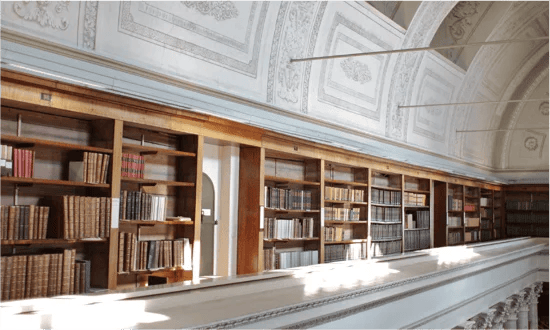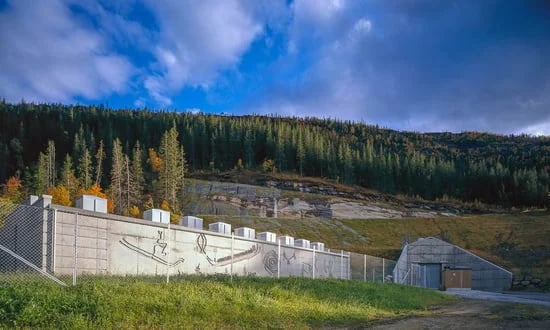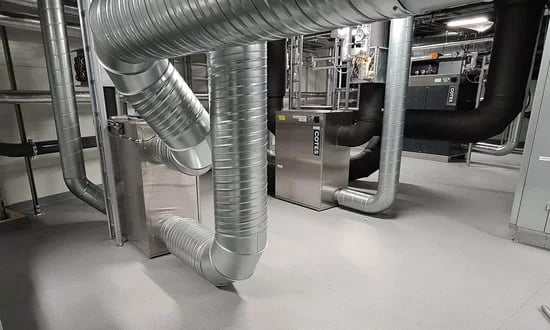Museum, archive and library artefacts and documents are often delicate, rare and valuable – and almost always difficult to keep in good condition. Without proper humidity control, you can be faced with all kinds of problems with these priceless items of cultural heritage, including:
- Deterioration that is often near-invisible until serious or irreversible damage has occurred
- Mould, fungi and bacterial growths
- Cracking, shrinkage and swelling of artefacts made of wood, textiles and paper
- Corrosion of priceless metal objects
- Poor working conditions for staff working with key materials
CONTROL HUMIDITY, PRESERVE HERITAGE
Historical materials – whether they are books, documents, artifacts, films or tapes documenting our history – are an irreplaceable part of any society’s culture, that simply cannot be reproduced once they are damaged or destroyed.
Unfortunately, these types of materials can easily get damaged when exposed to high relative humidity. Fluctuating levels of moisture in the air (affected by weather, seasons and climate) can cause materials to deteriorate as a result of a wide range of processes, often near-invisible until the damage is done. Many of these items are organic in origin, easily affected by mould, fungi, and bacterial growth activity – all of which spread and flourish in high-humidity environments.

Varying levels of airborne moisture in and around hygroscopic materials, such as wood, textiles, cardboard and paper, can make them crack and alter their size, resulting in considerable irreparable damage and destroying their historical, academic, and cultural value.
Metal objects are easily affected by rust and corrosion, while materials such as films, tapes and documents all tend to degrade in uncontrolled humidity – and such degradation is irreversible.
Heating, fans, and ventilation are not capable of dealing with the problems stemming from uncontrolled airborne humidity, as well as being extremely expensive to run. Replacing one body of air affected by uncontrolled, fluctuating levels of humidity with another – under just as little control – will not solve the entire problem.
PREVENTIVE ACTION
Museums, archives and libraries tend to be public places. Therefore, there are certain areas in which ambient air will enter, and its specifications will always be affected by natural ventilation. The only realistic way to preserve and protect the stored contents and put them on display in museums, archives and libraries is to maintain levels of relative humidity below 50%. This has to be done all year round, irrespective of weather conditions, and regardless of visitor density.
The National Library of Norway is the home of everything that is published in Norway, such as books, maps, newspapers, and films, just to name a few. Everything is digitized and the originals are safely stored. The National Archives of Norway is responsible for all state archives and selected private archives, in both digitization and storage. Today, an increased need for storage space led to the construction of two new halls in the Norwegian mountains of Mo i Rana, equaling to 110,000 meters of shelving that will preserve many originals after they have been digitized.

Image: National Library and National Archives of Norway in Mo i Rana, Norway. Photo credit: Statsbygg
Both temperature and humidity inside the mountain halls are crucial for the storage of national treasures and they must be as stable as possible to ensure safe and optimal conditions for the items being stored. Relative humidity must be stable at 35% in most areas and at different temperatures (temperature varies from 17°C to -5°C, depending on what is to be stored). For some magazines relative humidity must be kept at 5.2%.
Nine Cotes dehumidifiers ensure the right relative humidity in the National Library and National Archives of Norway while being as energy efficient as possible. According to Morten Strandskog, F-Tech's Project and Sales Manager, this was a professionally executed and aesthetically pleasing solution to keep the relative humidity low. It resulted in a neat and tidy installation of the adsorption dehumidifiers, supported by a strong collaboration between F-Tech and GK Norge (supplier of technology in construction).
Image: Cotes adsorption dehumidifiers installed in the National Library and National Archives of Norway in Mo i Rana, Norway, via Cotes partner, F-Tech. Photo credit: F-Tech
"For dehumidifiers, it is extremely smart to be able to utilize both hot and cold air from the cooling machine, making this a very energy-efficient solution", says F-Tech Project Manager Morten Strandskog.
THE RIGHT DEHUMIDIFIERS FOR THE JOB
The amount of the space and level of humidity you need to remove from the air inside a particular storage space are usually the biggest determinants of which Cotes dehumidifier will best suit your particular needs. The goal is usually to keep relative humidity below 50%.
Image: Cotes Modular and Mobile Dehumidifiers
Cotes Modular units are a range of off-the-shelf dehumidifiers in different sizes and capacities, with add-on modules to meet your specific requirements, typically the most appropriate choice for the uniquely demanding storage requirements encountered in museums, archives and libraries. Learn more about the range of Cotes Modular dehumidifiers here: Download Cotes Modular Dehumidifiers Datasheet.
Cotes Mobile units consist of a selection of compact, lightweight dehumidifiers, built for mobility, with a handle for easy lifting and transportation, ideal for temporary storage setups and special exhibitions as well as other ad hoc humidity control requirements. Learn more about the range of Cotes Mobile dehumidifiers here: Download Cotes Mobile Dehumidifiers Datasheet.
- Reliable maintenance and control of stringent air conditions inside museums, archives and libraries where you store and work on key materials
- Prevention of corrosion and other humidity-related damage to historical artifacts of all kinds
- Low energy consumption and minimal operating costs while ensuring a humidity-controlled environment
- Service and maintenance costs are kept to a minimum
- No need for manual operation, emptying of water containers etc.
- Easy to install in confined spaces because they are light and compact
Do you have issues with humidity?
If you would like to determine whether you need for a dry-air solution in your production or if you would like to explore what a custom dry-air strategy could do for your business, please reach out to one of our trusted partners near you.

.webp?width=548&height=542&name=20210622%20Productimage_Partner_Lineup_Steel%20overlay%20(2).webp)
